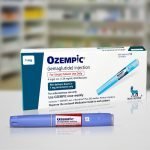
The kids are not alright. New data shows a troubling 8% annual increase in the number of American children ages 8 to 12 who died by suicide, with the sharpest increase seen among girls. Suicide has now become the fifth leading cause of death among both male and female preteens, report a team led by Donna Ruch, of Nationwide Children’s Hospital in Columbus, Ohio. Ruch works at the hospital’s Center for Suicide Prevention and Research. Her team published its findings July 30 in the journal JAMA Network Open. Rising rates of suicides among children have set off alarm bells for experts in recent years. “In 2021, the National Institute of Mental Health convened a research roundtable series to address the rising rates of suicides in preteens, defined as youths aged 8 to 12 years,” Ruch’s group noted. They said that, until now, there’s been little good data on suicides among preteens. To help remedy that, the Ohio group looked at data for 2001 through 2022 from a major federal online database that lists the underlying cause of death for U.S. preteens. Overall, 2,241 preteens are known to have died by suicide during the more than two decades covered by the database. Initially, there was a encouraging downward trend in these deaths between 2001 and 2007, Ruch’s group noted. However, beginning in 2008, that trend reversed.… read on > read on >













-150x150.jpeg)




